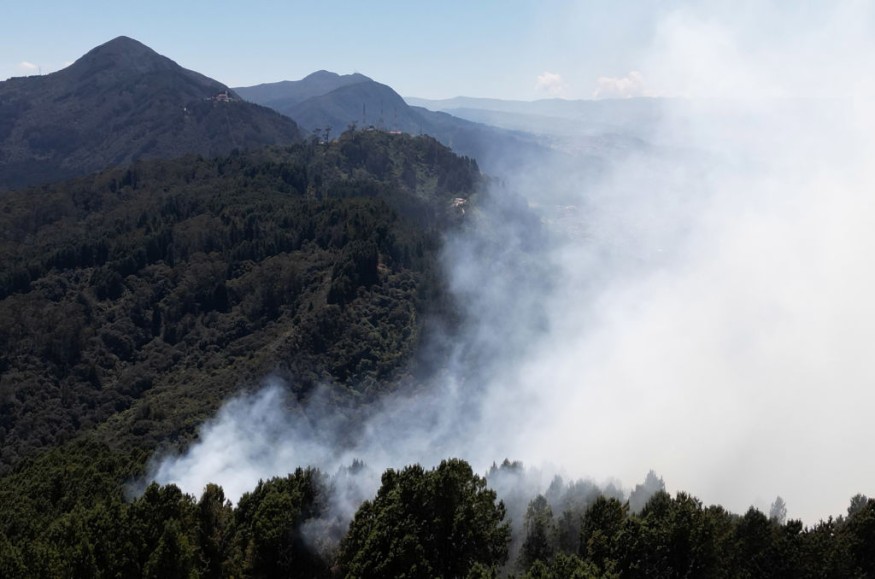Foreign plant species are fueling wildfires that have been raging in Colombia's capital city of Bogota over the past week, experts say.
In January alone, Colombia extinguished more than 200 fires, according to local authorities. Last week, Colombia's President Gustavo Petro announced that he would declare the wildland fires burning in the country as a natural disaster, allowing further assistance.
While authorities and reports focus on the devastating impacts of the Bogota wildfires, scientists in the field of biology are attributing the persistent fires to the invasive plants, describing them as very combustible. These invasive vegetation are reportedly native to Australia and Europe. However, modern commercial trade paved the way for the arrival of these plants in Bogota during the early 20th century.
Amid intense heat and the El Nino weather phenomenon, the non-native plant species involving trees and shrubs are igniting not only the Bogota fires but also helping them spread, destroying local fauna. This environmental catastrophe not only affects plants but also the Colombian capital's natural ecosystems and large population.
Foreign Plant Species

Foreign plant species that have invaded Bogota are "stoking" the forest fires surrounding the capital, as mentioned earlier. Local reports indicate at least four wildfires have broken out in the past week, particularly among eucalyptus, pine, and gorse plants covering the Andean Mountain range that borders east of Bogota.
The exact cause of the fires remains unknown, but have been attributed to El Nino.
The plants, including trees and shrubs, contain oils and saps that are significantly flammable and contribute to the prolonging of the fire for hours and even days, according to Arnold Garcia Samaca, a biologist from the National University of Colombia. Samaca adds that these invasive plants help reproduce the fires and displace native vegetation.
The culprits are Eucalyptus trees that are mostly native to Australia and the pine trees from Europe. As urban development also increased demand for wood, these invasive plant species were introduced approximately 100 years ago.
In 2013, a related study published in the journal Ecological Engineering also explored the ecosystem invasion of invasive vegetation in the high-Andean forest, including Bogota.
Bogota Wildfires
Over the past three months, Colombia's wildland fires have engulfed thousands of acres of land, devastating over 17,000 hectares across the South American country amid hot and dry conditions linked to El Nino, local officials stated. Heavy smoke from the wildfires led to the closure of 40 parks and hiking trails. Officials encouraged residents to remain indoors and wear masks when going outside.
Since last week, the Bogota fires witnessed more than 600 emergency responders battling two large fires in the Cerros Orientales area. Bogota Mayor Carlos Fernando has effectively managed the wildfires that scorched the Eastern hills of the capital city, according to local sources earlier this week.
Currently, there have been no reports if measures that will be taken to address the problem of Bogota's foreign plant species.
© 2025 NatureWorldNews.com All rights reserved. Do not reproduce without permission.





